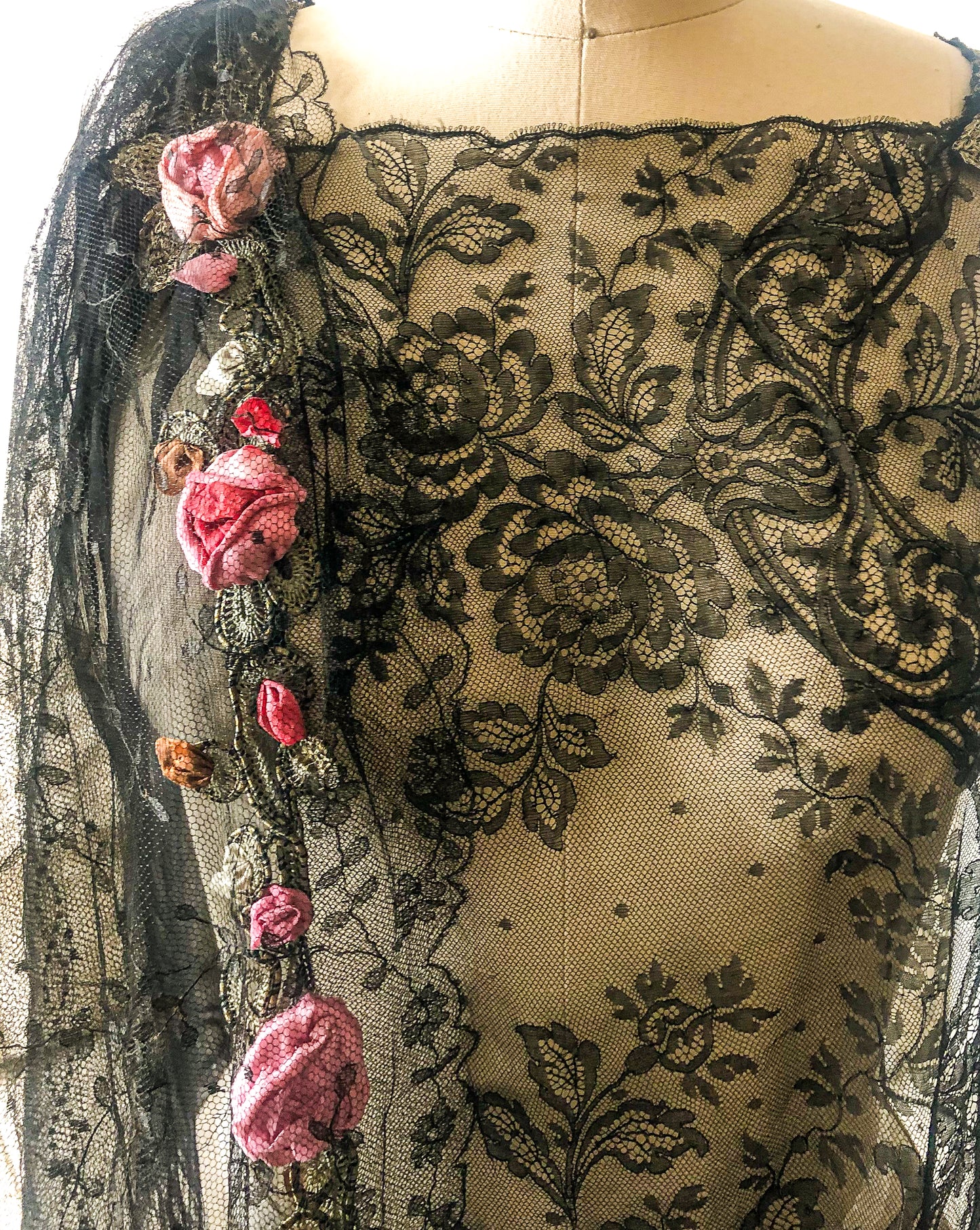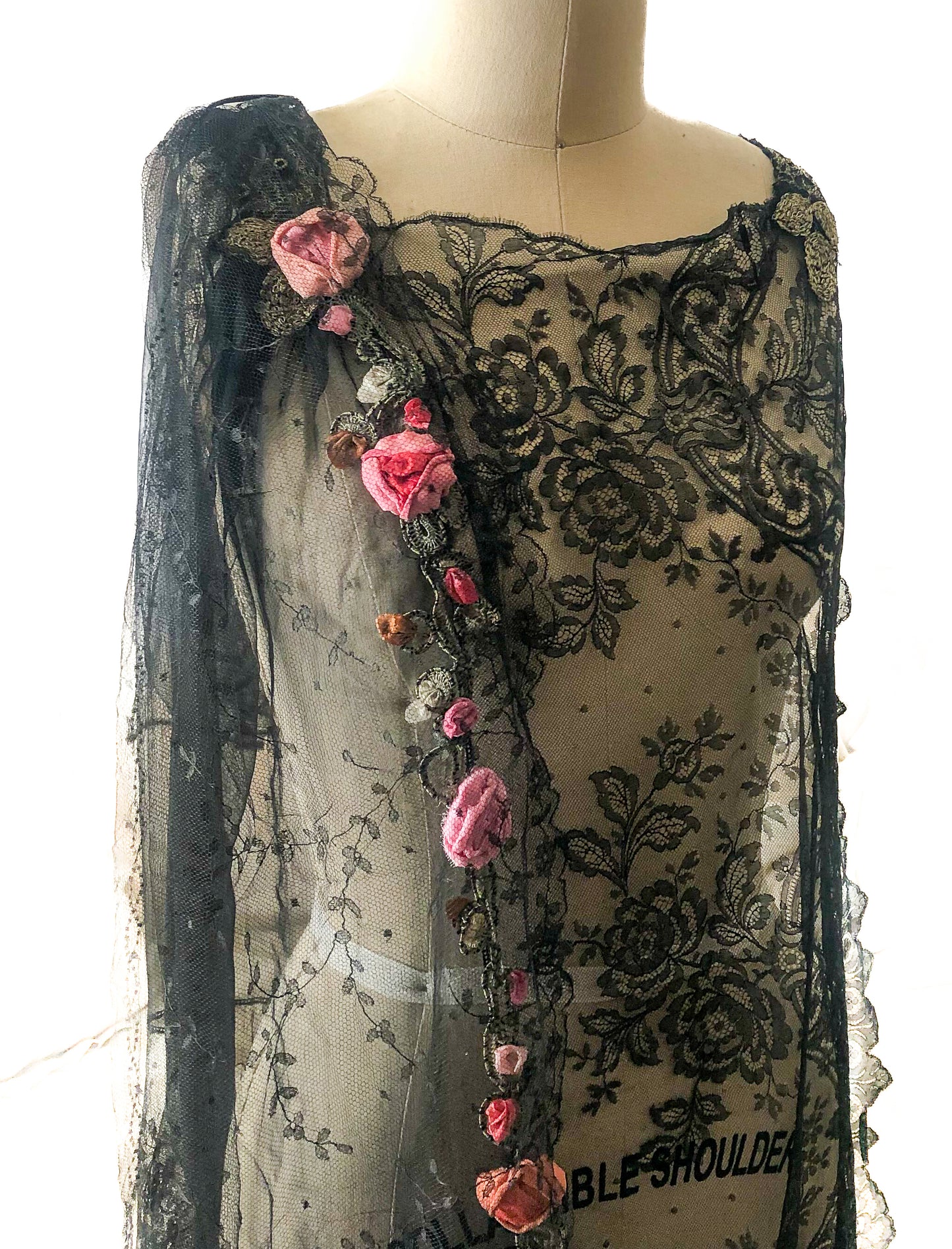My Store
1920s overdress with cascading 3D floral vine
1920s overdress with cascading 3D floral vine
Couldn't load pickup availability
This dress is a beautiful example of early 20th-century fashion, likely dating from the 1910s to the early 1920s, possibly even late Edwardian to early Art Deco period. Here's a breakdown of its style and details:
-
This romantic floral piece was made as a sheer overdress or robe, orignally worn over a slip or base layer. This kind of garment was often used for formal events, tea gowns, or evening wear.
-
The asymmetrical shoulder drape and delicate construction suggest a fashion-forward or haute couture piece from its time.
Probably French:
-
Designers like Paul Poiret, Jeanne Lanvin, and early Coco Chanel were pioneering delicate, floaty, lace-adorned gowns during this time.
-
The handmade ribbon flowers and fine lace are hallmarks of French couture.
-
The asymmetry and layering also point to avant-garde French design from that period.
- Label removed taxation. family brought from france (grandmother). stoewsin parchment paper in excellent condiiton. amazing catch.
🕰️ Time Period:
-
Circa 1915–1925.
-
The loose, column-like silhouette, lack of defined waist, and use of lace and netting align with the transition from the Edwardian "S-bend" shape to the looser flapper styles of the 1920s.
-
The romantic floral motifs and detailed embellishment are reminiscent of Paul Poiret or early Chanel influences.
🎨 Style:
-
Art Nouveau transitioning into Art Deco.
-
The lace, florals, and asymmetrical draping reflect Art Nouveau sensibilities, while the streamlined silhouette begins to hint at the modernism of the Art Deco era.
-
The handmade feel and careful embellishment suggest couture or custom work, possibly from France or a high-end American or British designer.
🧶 Fabrics & Materials:
-
Base Fabric: Sheer black net or tulle, possibly silk or cotton-based.
-
Overlay: Elaborate black lace, machine or hand-made.
-
Appliqué Embellishments: Soft, velvety silk ribbon flowers—this was a popular decorative technique at the time.
-
Thread & Trims: Possibly metallic embroidery thread for the leaves, and additional silk or rayon elements for the finer vines and details.
🌹 Other Notable Features:
-
The 3D floral trim cascading from the shoulder down to the hem is a stunning example of early 20th-century handcraft.
-
The fitted but transparent bodice and flowing shape suggest it may have been worn with a colored underdress to show off the design.
Share





